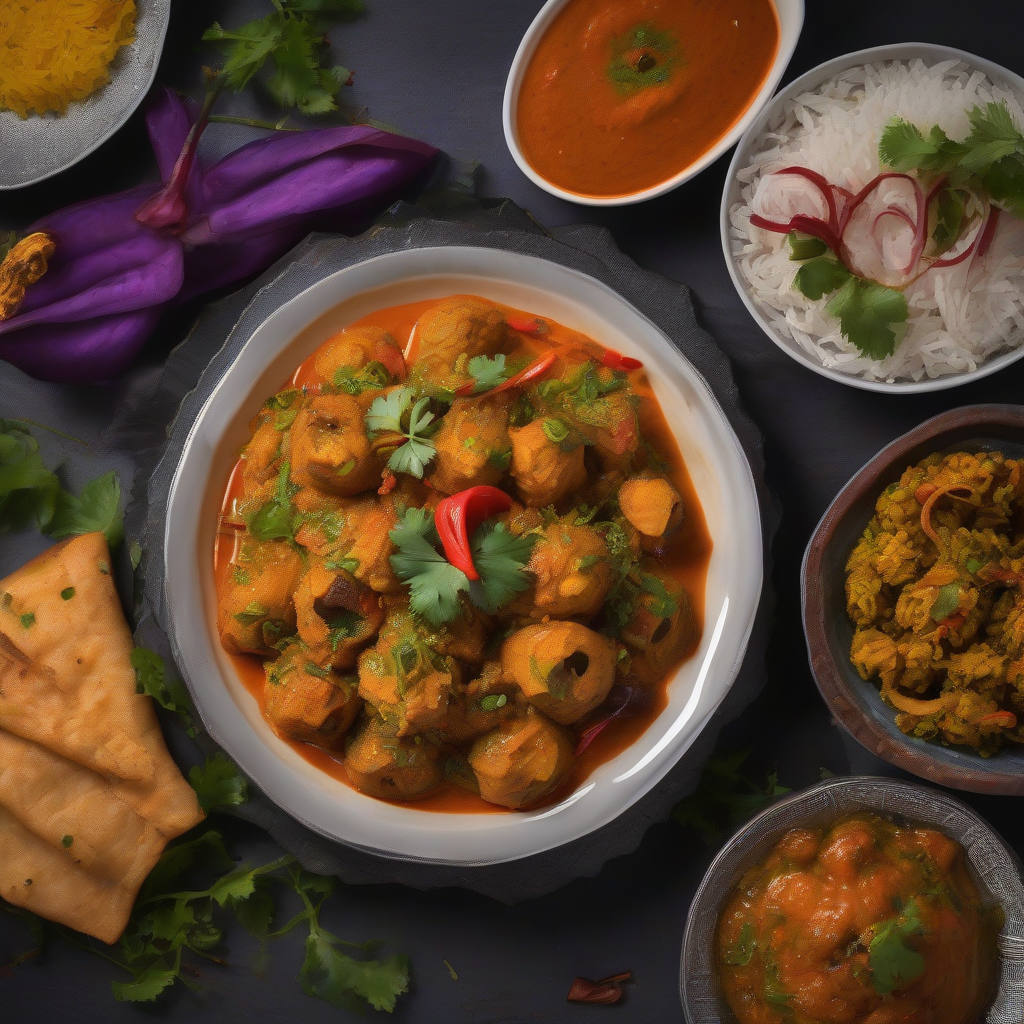Tenga Bora: A Taste of Assam, Straight From Chef Curry Do’pyaza’s Kitchen!
Namaste and Aadaab Doston! Chef Curry Do’pyaza here, ready to whisk you away on another flavorful adventure. Today, we’re venturing east, to the lush, green lands of Assam, for a dish that’s as unique as it is delicious: Tenga Bora!
For my Assamese brothers and sisters, Joi Aai Axom! This one’s for you!
Tenga Bora is more than just a dish; it’s a celebration of sourness, a testament to the ingenious ways our ancestors used simple ingredients to create culinary magic. It’s a dish that sings of lazy afternoons, family gatherings, and the sweet-sour memories of childhood.
When Do We Feast on Tenga Bora?
Tenga Bora isn’t tied to one specific festival, but it’s a beloved part of Assamese cuisine throughout the year. It’s especially popular during the warmer months, as the sourness is incredibly refreshing. Think of it as Assam’s answer to lemonade, but with fish! It’s often made during Bohag Bihu (the Assamese New Year) and other family celebrations. It is also prepared during simple family get togethers and casual meals.
A Little History Lesson
The history of Tenga Bora is intertwined with the history of Assam itself. The dish likely originated as a way to preserve fish using readily available souring agents like kaji nemu (Assamese lemon) and thekera (dried mangosteen). Over time, it evolved into the flavorful, comforting dish we know and love today. It’s a testament to the resourcefulness of Assamese cooks, who transformed simple ingredients into something truly special.
Let’s Get Cooking!
- Preparation Time: 15 minutes
- Cooking Time: 25 minutes
Ingredients – The Magic Makers:
- 500g Rohu or Catla fish, cut into pieces (or any firm white fish)
- 2 medium-sized potatoes (Aloo), peeled and cubed
- 1 medium-sized tomato (Tamatar), chopped
- 1 large onion (Pyaaz), finely chopped
- 2-3 green chilies (Hari Mirch), slit lengthwise (adjust to your spice level)
- 1 inch ginger (Adrak), grated
- 4-5 cloves garlic (Lahsun), minced
- 1 teaspoon turmeric powder (Haldi Powder)
- 1 teaspoon red chili powder (Lal Mirch Powder) (optional, for extra heat)
- 1 teaspoon coriander powder (Dhania Powder)
- 2-3 Thekera (dried mangosteen slices) or 2 tablespoons Kaji Nemu (Assamese lemon) juice
- 2 tablespoons mustard oil (Sarson ka Tel)
- Fresh coriander leaves (Dhania Patti), chopped for garnish
- Salt (Namak) to taste
- Water as needed
Step-by-Step Instructions – The Recipe Unveiled:
- Marinate the Fish: In a bowl, gently mix the fish pieces with a pinch of turmeric powder and salt. Let it rest for about 10 minutes. This helps to remove any fishy smell and adds a touch of color.
-
Heat the Oil: In a pot or kadai (wok), heat the mustard oil over medium heat. Mustard oil adds a lovely pungent flavor that’s characteristic of Assamese cuisine. Let it smoke slightly before adding the onions.
-
Sauté the Aromatics: Add the chopped onions and sauté until they turn a beautiful golden brown. This step is crucial for developing the flavor base of the dish. Then, add the grated ginger, minced garlic, and slit green chilies. Sauté for another minute until fragrant.
-
Add the Spices: Add the turmeric powder, red chili powder (if using), and coriander powder. Sauté for a few seconds, being careful not to burn the spices. A little water can be added to prevent burning.
-
Cook the Tomatoes and Potatoes: Add the chopped tomatoes and cubed potatoes. Cook until the tomatoes soften and the potatoes are slightly tender, about 5-7 minutes.
-
Add the Fish: Gently add the marinated fish pieces to the pot. Be careful not to break them.
-
Add the Sourness: Add the Thekera (dried mangosteen) or Kaji Nemu (Assamese lemon) juice. If using Thekera, add it whole. If using Kaji Nemu juice, add it now.
-
Simmer and Cook: Add enough water to just cover the fish and vegetables. Bring the mixture to a simmer, then reduce the heat to low, cover, and cook for about 10-12 minutes, or until the fish is cooked through and flakes easily.
-
Garnish and Serve: Garnish with fresh coriander leaves and serve hot with steamed rice.
Chef Curry Do’pyaza’s Top Tips:
- Mustard Oil is Key: Don’t skip the mustard oil! It gives the dish its authentic flavor. If you don’t have it, you can use vegetable oil, but the flavor won’t be quite the same.
- Don’t Overcook the Fish: Fish cooks quickly, so be careful not to overcook it. Overcooked fish will be dry and rubbery.
- Adjust the Sourness: The sourness of the dish is a matter of personal preference. Adjust the amount of Thekera or Kaji Nemu juice to your liking.
Cooking It Your Way – Different Methods:
- Gas Stove: Follow the recipe as written above.
- Induction Stove: The same as gas stove cooking.
- Pressure Cooker: Not recommended, as the fish can easily overcook.
- Oven: Not recommended for this recipe.
- Microwave: Not recommended for this recipe.
- Air Fryer: Not suitable for this recipe.
- Slow Cooker/Crockpot: Not recommended, as the fish will likely overcook.
Nutritional Information (Approximate per serving):
- Calories: 350-400
- Protein: 30-35g
- Fat: 20-25g
- Carbohydrates: 15-20g
Serving Suggestions:
Tenga Bora is best served hot with a generous helping of steamed rice. The sourness of the dish pairs perfectly with the plainness of the rice. You can also serve it with a side of dal (lentils) and some fresh vegetables for a complete and satisfying meal.
A Humble Request, My Friends:
Now it’s your turn! I encourage you to try this delightful Tenga Bora recipe at home. Gather your ingredients, put on your apron, and let the aromas of Assam fill your kitchen. Share this delicious dish with your friends and family, and let them experience the magic of Assamese cuisine. Let me know how it turns out in the comments below!
Happy Cooking!
Yours in Flavor,
Chef Curry Do’pyaza!
